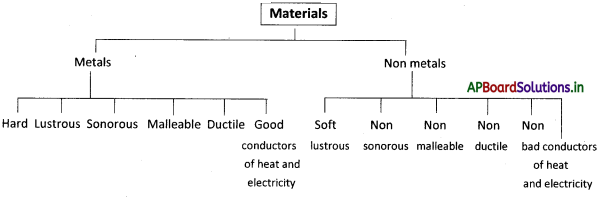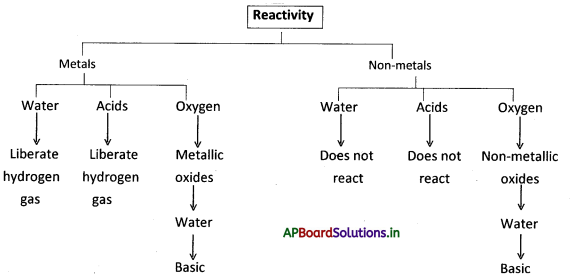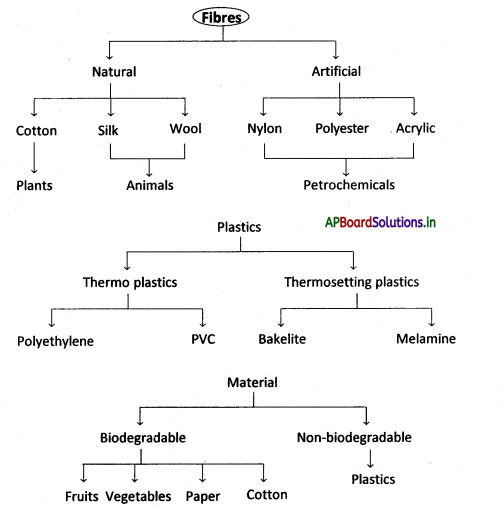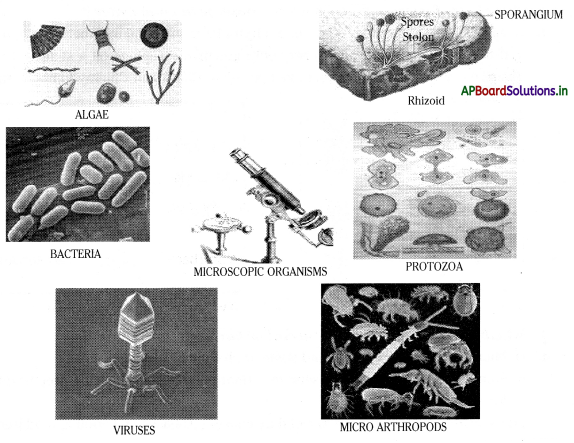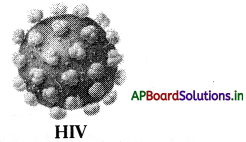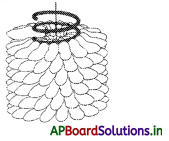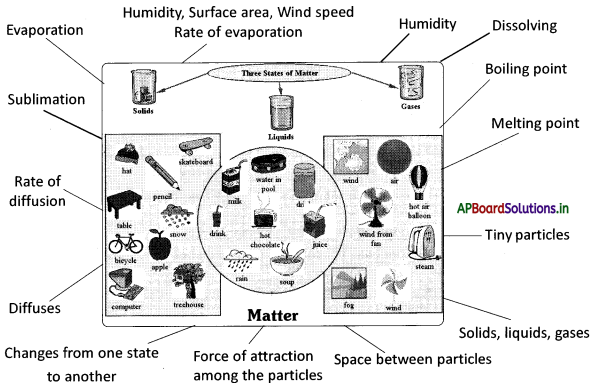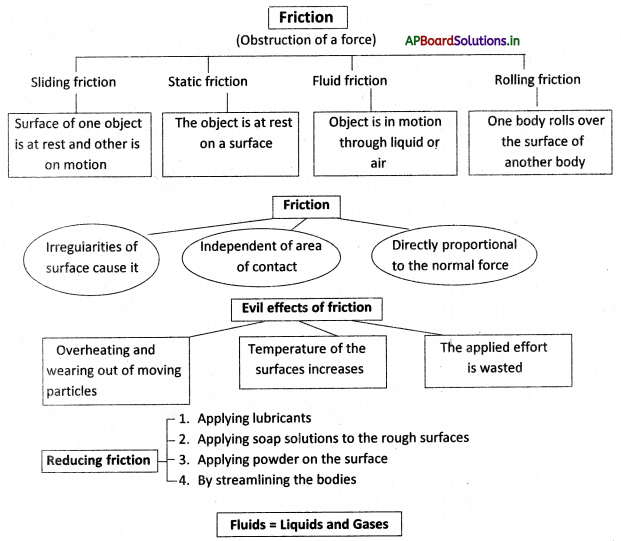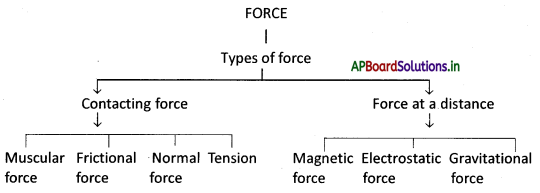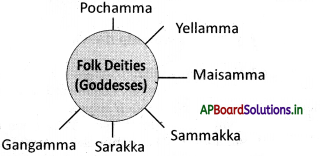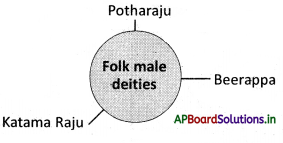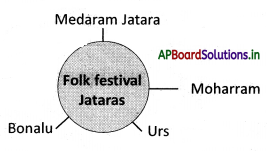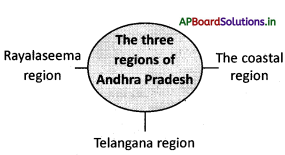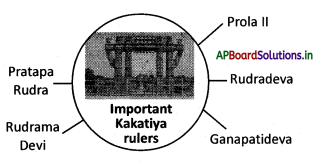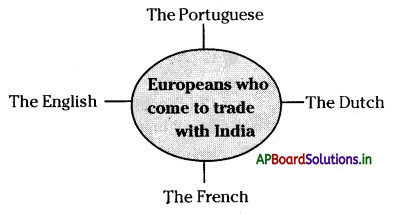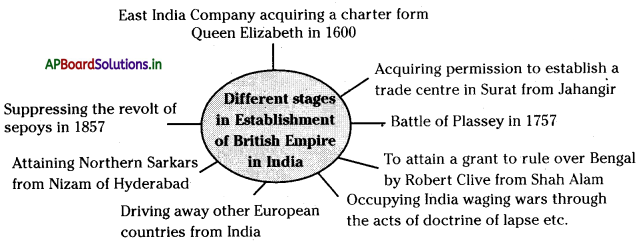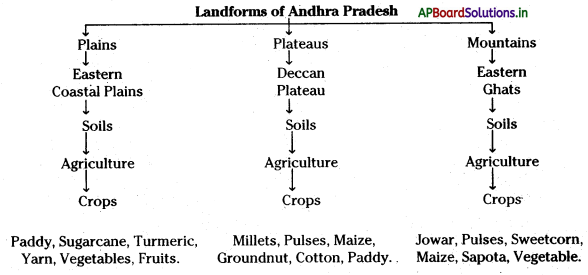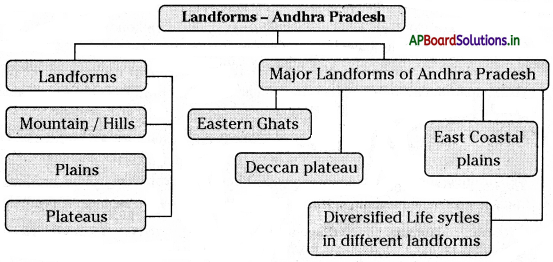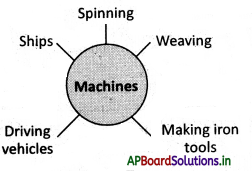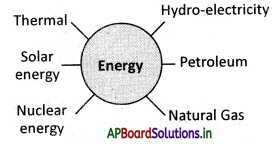Students can go through AP State Board 8th Class Biology Notes Chapter 3 Story of Microorganisms 2 to understand and remember the concept easily.
AP State Board Syllabus 8th Class Biology Notes Chapter 3 Story of Microorganisms 2
→ Some microorganisms are useful and some microorganisms are harmful.
→ Microbes are useful in home, industry, cleaning the environment.
→ Soil microbes degrade organic wastes into useful nutrients. This helps plants in their growth and development.
→ Some microorganisms cause diseases in humans, plants, and other animals.
→ Some insects and animals act as vectors of microbes.
→ Some microbes release toxins in improperly preserved food, which causes food poisoning.
→ Pasteurization helps in milk preservation.
→ The bacteria ‘rhizobium’ present in root nodules of leguminous plants fixes atmo¬spheric Nitrogen.
→ Microorganisms are useful to human beings in a number of ways.
→ Lactic acid bacteria help in the curdling of milk.
→ The ripening of cheese is due to bacteria.
→ Some bacteria help the plants by providing them with nitrates that are obtained by fixing atmospheric nitrogen.
→ Fermentation, for the production of alcohol, is due to yeasts.
→ Antibiotics are obtained from certain fungi like penicillium.
![]()
→ Lactobacilli Plus: Gram-positive facultative anaerobic or microaerophilic rod-shaped bacteria. Most of its members convert lactose and other sugars to lactic acid.
→ Penicillium: Penidiilum ¡s a genus of ascomycetous fungi of major importance in the natural environment as well as food and drug production. Members of the genus produce penicillin, a molecule that is used as an antibiotic, which kills or stops the growth of certain kinds of bacteria inside the body.
→ Fermentation: The anaerobic conversion of sugar to carbon dioxide and alcohol by yeast.
→ Sterilization: The act of making an organism barren or infertile (unable to reproduce).
→ Vaccination: An antigenic preparation used to stimulate the production of antibodies and provide immunity against a disease.
→ Bacillus: Bacillus Thuringiensis (or Bt) is a Gram-positive, Coldwell bacterium, Thuringiensis commonly used as a biological pesticide; alternatively, the toxin may be extracted and used as a pesticide.
→ Pathogens vectors: Any agent that is capable of causing a disease ¡s called a pathogen. A vector is any agent (person, animal, or microorganism) that carries and transmits an infectious pathogen into another living organism.
→ Pasteurization: Partial sterilization of foods at a temperature that destroys harmful microorganisms without major changes in the chemistry of the food.
→ Symbiosis: Symbiosis “together” and “living” is close and often long-term interaction between two or more different biological species.
![]()
→ Vaccine: An antigenic preparation used to stimulate the production of antibodies and provide immunity against a disease.
→ Smallpox: Smallpox is a disease caused by a poxvirus that is transmitted from person to person that causes high fever, characteristic rash, and may kill about one-third of infected.
→ Aids: AIDS (Acquired Immuno Deficiency Syndrome) is the final stage of HIV disease, which causes severe damage to the immune system.
→ Amoebiasis: Infection by a disease-causing amoeba. Amoebic dysentery.
→ Anthrax: An infectious, usually fatal disease of warm-blooded animals, especially of cattle and sheep, caused by the bacterium Bacillus anthracis.
→ Antibiotics: Substances that killed bacteria were generally named antibiotics.
→ Antibodies: Substances that fight against disease-causing organisms.
→ Botulism: Clostridium botulinum is a bacterium that is widely responsible for causing food poisoning. The disease is known as Botulism.
→ Chickenpox: Chickenpox is a highly Infectious disease characterized by a fever and rash.
→ Communicable diseases: Diseases that spread through from infected people to healthy ones.
→ Conjunctivitis: Conjunctivitis is swelling (inflammation) or infection of the membrane lining the eyelids (conjunctiva).
![]()
→ Decompose: Broken down of organic matter physically and chemically by bacterial or fungal action or rot.
→ Garbage: Waste of vegetables, fruits, food, and other domestic materials.
→ Germ theory: The theory that all contagious diseases are caused by microorganisms.
→ Leguminous: Plants belonging to pulses like red gram, green gram, etc.
→ Malaria: Malaria is a parasitic disease that involves high fevers, shaking chills, flu-like symptoms, and anemia. Transmitted by a mosquito.
→ Molasses: Thick, dark brown, uncrystallized juice obtained from raw sugar during the refining process.
→ Septicemia: Septicemia is bacteria in the blood (bacteremia) that often occurs with severe infections. Symptoms: Septicemia can begin with: Chills; High fever; Rapid breathing; Rapid heart rate. The person looks very ill.
→ Sewage: Wastewater and excrement conveyed in sewers.
→ Smear: A mark or streak of a greasy or sticky substance.
→ Swine flu: Swine flu (swine influenza) is a respiratory disease caused by viruses (influenza viruses) that infect the respiratory tract of pigs and result in nasal secretions, etc.
→ Transgenic: Being an organism whose genome has been altered by the transfer of a gene or genes from another species.
→ Breed: Transgen/cm/ce;transgen/cp/ants. (Genome = The complete set of the genetic material of an organism).
→ Tuberculosis: It is a contagious bacterial infection that involves the lungs, but may spread to other organs.
![]()
→ Typhoid: Typhoid fever is an acute illness associated with fever that is most often caused by the Salmonella typhi bacteria.
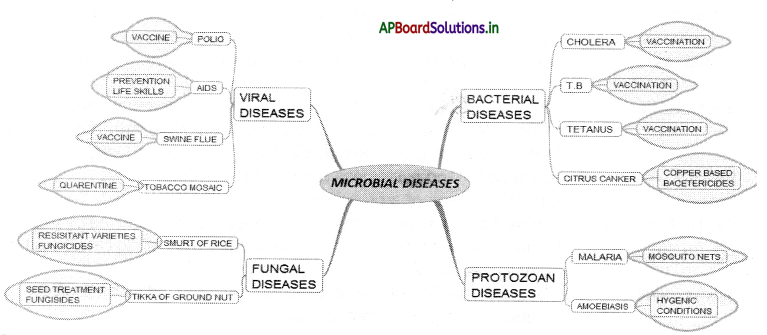
→ We must use antibiotics prescribed by a qualified doctor. If you use antibiotics with¬out consulting a qualified doctor it may harm you. The unnecessary use of antibiotics affects blood cells that fight infections. Sometimes they may kill useful bacteria too in our intestine and this increases the resistance towards antibiotics. Excess use of antibiotics weakens the body.
→ Inventor of Aureomycin: This is the picture of Dr. Yellapreggada Subba Rao. He was born in the West Godavari district of Andhra Pradesh state, India. He discovered Aureomycin i.e. tetracycline which cures a number of bacterial diseases like Typhoid, Plague, Tuberculosis, etc. 11 mm
→ Dr. Jonas Salk discovered the vaccine for Polio in 1952. He wanted to distribute it freely to everyone. So he never patented his polio vaccine. Dr. Albert Sabin discovered the oral polio vaccine in 1957.
→ What is Bt?
Bt means Bacillus Thuringiensis is the name of a bacterium. It produces a toxin that kills pests on plants or crops. The bacterium is used as bio-pesticide. In transgenic crop plants, this toxin-producing gene was separated from the bacterium and transferred into the crop plants. So this can protect it from pests. For example B.t. cotton.
→ Dr. Ronald Ross discovered that female Anopheles mosquitoes are carriers of the causative Microorganism (parasite) for Malaria. For this discovery, Dr. Ronald Ross got Nobel Prize in 1902. He discovered it in Secunderabad. For the full story of the discovery of Ross. Refer to the annexure for more details.
→ Clostridium botulinum is a bacterium that is widely responsible for causing food poisoning. The disease is known as botulism. Vomiting and diarrhea are the symptoms of food poisoning. it may lead to death.
![]()
→ Dr. Ronald Ross:
Ronald Ross was born on May 13, 1857, as the son of Sir C.C.G. Ross, a General in the English army. He commenced the study of medicine at St. Bartholomew’s Hospital in London in 1875; entered the Indian Medical Service in 1881. He commenced the study of malaria in 1892. In 1894 he determined to make an experimental investigation in India of the hypothesis ofLaveran and Manson that mosquitoes are connected with the propagation of the disease. After two and a half years’ failure, Ross succeeded in demonstrating the life-cycle of the parasites of malaria in mosquitoes, thus establishing the hypothesis ofLaveran and Manson.
Malaria’S Conqueror and the mosquito he defeated are affectionately caricatured in a 1908 carton published by a newspaper in the British colony of Mauritius. The colony’s hero was Sir Ronald Ross, A British Army surgeon, who had proved nine years earlier that malaria was transmitted by the bite of the Anopheles mosquito, and not by malaria (Italian for “bad air”). Where malaria had spread with increasing ferocity for 40 years, Ross ordered that the mosquito-breeding swamps drain, and thus halted the epidemic.
